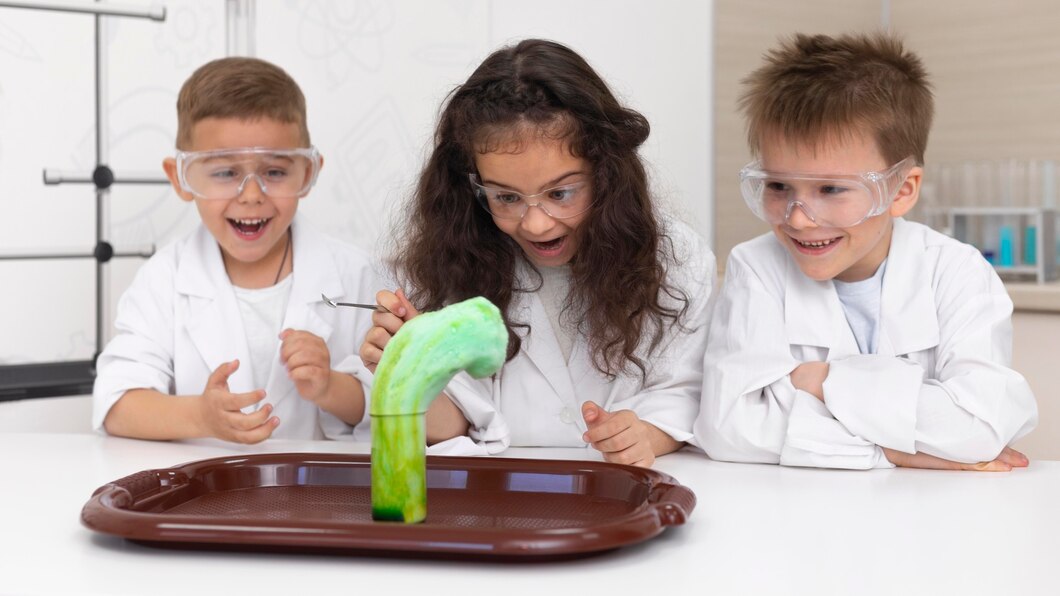Introducing young learners to STEM (Science, Technology, Engineering, and Math) through fun and engaging activities can ignite a lifelong love for these subjects. Hands-on STEM activities help children develop critical thinking, problem-solving skills, and creativity. Here are some exciting STEM activities that will captivate young minds and foster a passion for learning.
1. DIY Volcano Eruption:
Creating a DIY volcano is a classic science experiment that demonstrates chemical reactions in a visually exciting way. It’s a fantastic activity to teach young learners about geology and chemistry.
Example: Build a small volcano using clay or papier-mâché around a plastic bottle. Fill the bottle with baking soda and a few drops of food coloring. When ready, pour vinegar into the bottle and watch the “lava” erupt. Explain the chemical reaction between the baking soda and vinegar that creates the eruption.
2. Build a Bridge Challenge:
This engineering activity encourages children to design and construct a bridge using everyday materials. It’s a great way to introduce basic engineering concepts and problem-solving skills.
Example: Provide materials such as popsicle sticks, straws, tape, and string. Challenge your child to build a bridge that can hold the weight of a small toy car. Discuss the importance of structure and balance in engineering.
3. Floating and Sinking Experiment:
Explore the principles of buoyancy and density with a simple floating and sinking experiment. This activity helps children understand why some objects float while others sink.
Example: Fill a large container with water and gather various small objects (e.g., a rubber duck, a coin, a plastic spoon). Ask your child to predict which objects will float and which will sink, then test each one. Discuss the results and explain why some objects float due to their density compared to water.
4. Simple Circuit Creation:
Introduce young learners to the basics of electricity by creating simple circuits. This hands-on activity teaches them about electrical currents and the components of a circuit.
Example: Provide a small battery, a light bulb with a holder, and some wires with alligator clips. Show your child how to connect the battery to the light bulb using the wires to complete the circuit and make the bulb light up. Explain how electricity flows through the circuit to power the bulb.

5. Homemade Slime:
Making slime is a fun and tactile way to explore the properties of materials and chemical reactions. It’s also an excellent introduction to non-Newtonian fluids.
Example: Mix 1/2 cup of white glue with 1/2 cup of water and a few drops of food coloring. In a separate bowl, mix 1 teaspoon of borax with 1 cup of warm water. Slowly add the borax solution to the glue mixture while stirring until the slime forms. Discuss the chemical reaction that turns the liquid mixture into stretchy slime.
6. Growing a Bean Plant:
Growing a bean plant is a simple and rewarding biology experiment. It teaches children about plant life cycles and the requirements for plant growth.
Example: Place a damp paper towel inside a clear plastic bag and insert a few bean seeds between the towel and the bag. Seal the bag and tape it to a sunny window. Observe the seeds over several days as they sprout and grow. Discuss the stages of plant growth and the importance of sunlight, water, and air.
7. Balloon Rocket Experiment:
The balloon rocket experiment is a fun way to demonstrate the principles of physics, particularly Newton’s third law of motion.
Example: Thread a long piece of string through a straw and tie the ends of the string to two fixed points (e.g., two chairs). Inflate a balloon but don’t tie it. Tape the balloon to the straw and let it go. Watch the balloon rocket along the string as the air escapes. Explain how the release of air propels the balloon forward due to Newton’s third law.
8. Building a Catapult:
Building a simple catapult introduces children to principles of physics and engineering, such as force, tension, and trajectory.
Example: Using popsicle sticks, rubber bands, and a plastic spoon, help your child construct a small catapult. Test different objects as projectiles and measure how far they travel. Discuss how the tension in the rubber bands and the angle of release affect the distance.
9. Exploring Magnets:
Exploring magnets allows children to learn about magnetism and magnetic fields. It’s an engaging way to introduce concepts of force and attraction.
Example: Provide a variety of magnets and objects made of different materials (e.g., paper clips, coins, plastic toys). Encourage your child to test which objects are attracted to the magnets and which are not. Explain how magnets work and the concept of magnetic fields.
10. Cloud in a Jar:
Creating a cloud in a jar is a fascinating experiment that teaches children about the water cycle and weather phenomena.
Example: Fill a jar with hot water and place a plate with ice cubes on top of the jar. Spray a small amount of hairspray into the jar and quickly cover it with the ice plate. Watch as a cloud forms inside the jar. Explain how the hot water vapor condenses on the cold surface, similar to cloud formation in the atmosphere.
STEM activities are a fantastic way to engage young learners and introduce them to the exciting world of science, technology, engineering, and math. By exploring DIY volcanoes, bridge-building challenges, floating and sinking experiments, simple circuits, homemade slime, plant growth, balloon rockets, catapults, magnet exploration, and cloud formation, you can spark curiosity and foster a love for learning. Remember, the key is to make these activities fun and interactive, encouraging children to ask questions and explore the world around them.


